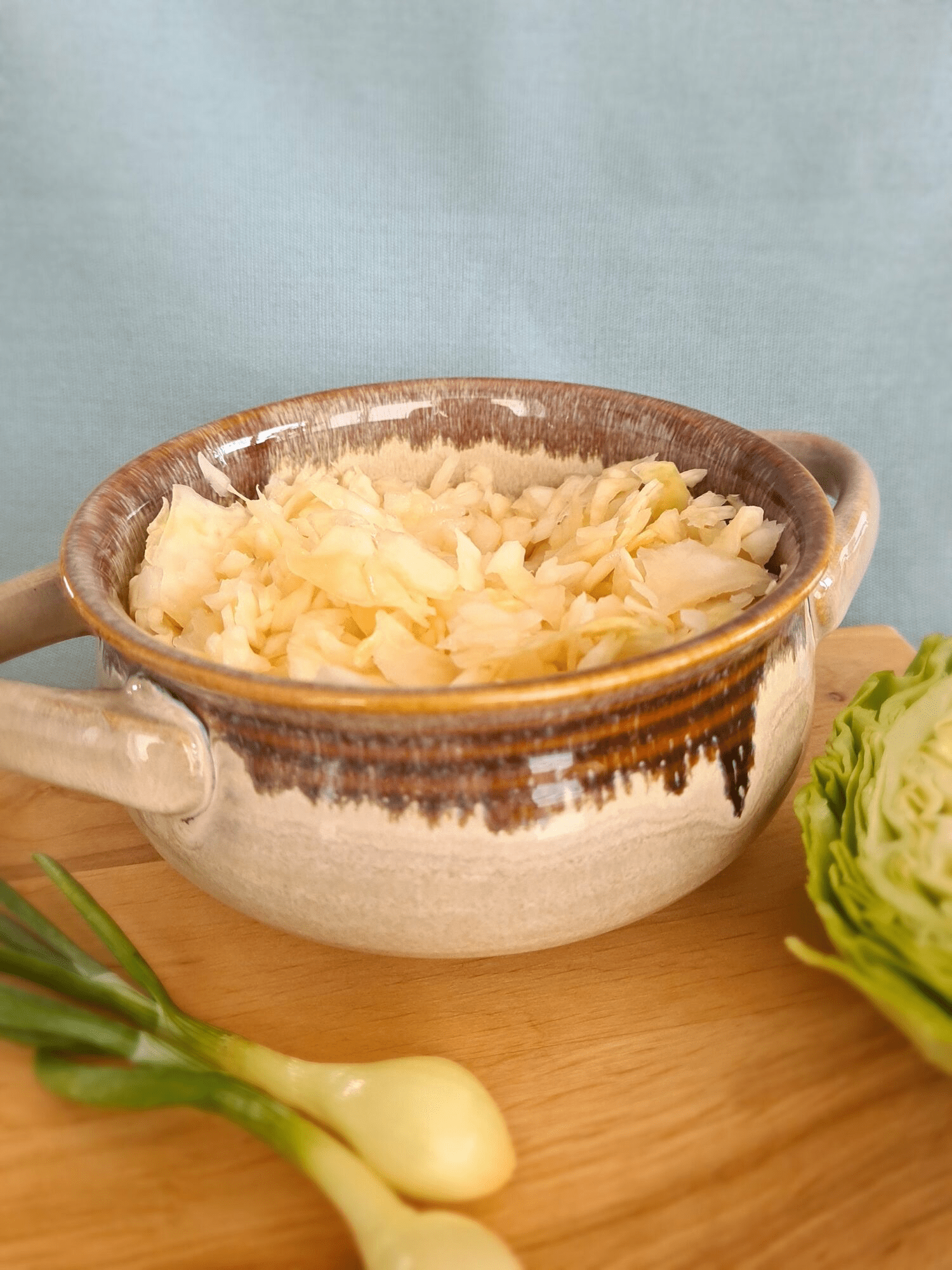Recently updated on November 21st, 2024 at 10:35 am
Historically, cultures around the world have improved their gut health by eating fermented foods. Guided by Rain Kuldjärv, food researcher and author, we chew over their enduring wisdom.
Once upon a time, in the distant past, a nomad was crossing the desert on his camel. Hanging from the pommel was his precious supply of milk – carried, as was the custom in those days, in a bag made out of a cow’s stomach. Stopping to rest, he uncorked the bag to take a refreshing draught, only to find, to his shock, that his lovely milk had turned into something else entirely. Unintentionally, our nomad had invented … cheese.
The combination of the naturally occurring bacteria in the cow’s stomach, along with the heat of the day and the gentle stirring motion of the loping camel, had created ideal conditions for fermentation.
It’s an apocryphal tale, as told by fermentation guru Rain Kuldjärv, but something along those lines is the most likely origin of one of our most common foodstuffs. Fermentation goes back a long way, says Kuldjärv – author of Fermentation Plain and Simple – who specialises in its study as part of his work exploring novel foods at Estonian research institute TFTAK. “Remains of breadcrumbs dating back over 14,000 years have been found in the Jordan Valley”, he says, explaining that any bread made in the traditional way – and even most modern loaves – involves at least some fermentation.
Feed your microbes with fermented foods!
On 27th June, join us in celebrating World Microbiome Day 2024. This year, learn about how diet shapes the gut microbiome and how eating fermented foods benefits your health.
While methods vary, they are all natural processes, involving yeast and/or bacteria, and they’re at the heart of everything from yoghurt, soy sauce and sauerkraut to kimchi, kefir and kombucha – and, of course, wine and beer. Leaving alcohol aside, there’s growing evidence of health benefits from consuming a range of fermented foods – but, says Kuldjärv, that wasn’t necessarily the motivation for history’s first fermenters. “People discovered that fermented foods lasted much, much longer – and in an age before fridges, that was a lifesaver: now they had food supplies that could last them through the year.”
Classic fermented foods are spread all round the globe, each having evolved to suit its particular environment and human (as well as bacterial) culture. Typical examples include:
Sauerkraut – fermented (literally ‘sour’) cabbage, hugely popular in Germany and eastern Europe, where it gave people the precious gift of vitamin C and other plant nutrients through the cold northern winters.

Kimchi – Korea’s variation on sauerkraut, famously buried in clay pots to keep it cool, but prevent it from freezing – nature’s fridge, in other words. Today’s kimchi is spicy – but, says Kuldjärv, that’s a recent development. “Chili pepper didn’t arrive in Korea until the 17th century.”
Kefir – plain old milk transformed into its familiar, tangy, effervescent taste thanks to a magic ingredient called ‘scoby’ – which simply stands for ‘symbiotic culture of bacteria and yeast’. Originating in Palestine and nearby, the process was kept secret by a chosen few for centuries: people believed if word spread, the mystical properties would vanish. Nowadays, of course, there are ‘plant-based’ alternatives – but those can’t be regarded as ‘real’ kefir, says Kuldjärv.
Kombucha – another ‘scoby’ product, in which the bacteria and yeast consume the sugars in sweet tea (black, green or white, according to taste). “A lot of myths” have grown up around it, says Kuldjärv, but it’s not just a refreshing, strangely fizzy drink: it also provides a range of organic acids, vitamins and bacteria – all of which benefit the gut.
Fermentation might even help save the planet, says Kuldjärv. One Estonian startup is exploring making palm oil substitutes from sawdust
Almost any foodstuff can be – and often is – fermented, Kuldjärv says. Fish sauce, such as the garum which was produced in Spain but famed throughout the Roman empire, was “the Heinz tomato ketchup” of its day. And a whole range of meat products including, for example, salami, involve fermentation.
The invention of the fridge threatened to kill off a lot of interest in fermentation, but its arrival coincided with a growing awareness of the health benefits of the process. While people in the past doubtless realised that fermented foods are typically easier to digest, Kuldjärv explains, today’s enthusiasm can be traced to studies like that carried out a century ago by Ilya Metchnikoff, a Russian scientist. He discovered that Bulgarian farmers who regularly ate the local yoghurt often lived to be centenarians. He attributed the effect to a particular bacteria involved in its fermentation, which he called Lactobacillus bulgaricus.
Now, with growing interest in the health of our (often depleted) gut biome, we’re all catching on. Eating a range of fermented foods boosts its diversity, and favours the presence of beneficial bacteria, which can affect everything from our physical to our emotional health. Our food can change our mood …

And fermentation might even help save the planet, says Kuldjärv: one Estonian startup (ÄIO) is exploring making palm oil substitutes from sawdust, and there’s growing interest too in the potential to conjure protein (almost literally) from thin air. Finland’s Solar Foods is using a process called gas fermentation, powered by renewable energy, to combine carbon dioxide captured from the air with microbes to produce a protein-rich food which looks and tastes like wheat flour. In a world where rising food insecurity and carbon emissions are both high on the agenda, this holds out the heady prospect of tackling two of our most serious threats in one go.
It’s all a far cry from a bag of milk, gone bad, on a camel.
Find out more about The European Food Information Council’s work on gut health here
Photography: Mailis Alter
This article was originally published on Positive.news and was republished here, with permission, under a CC BY-ND 4.0 license.








